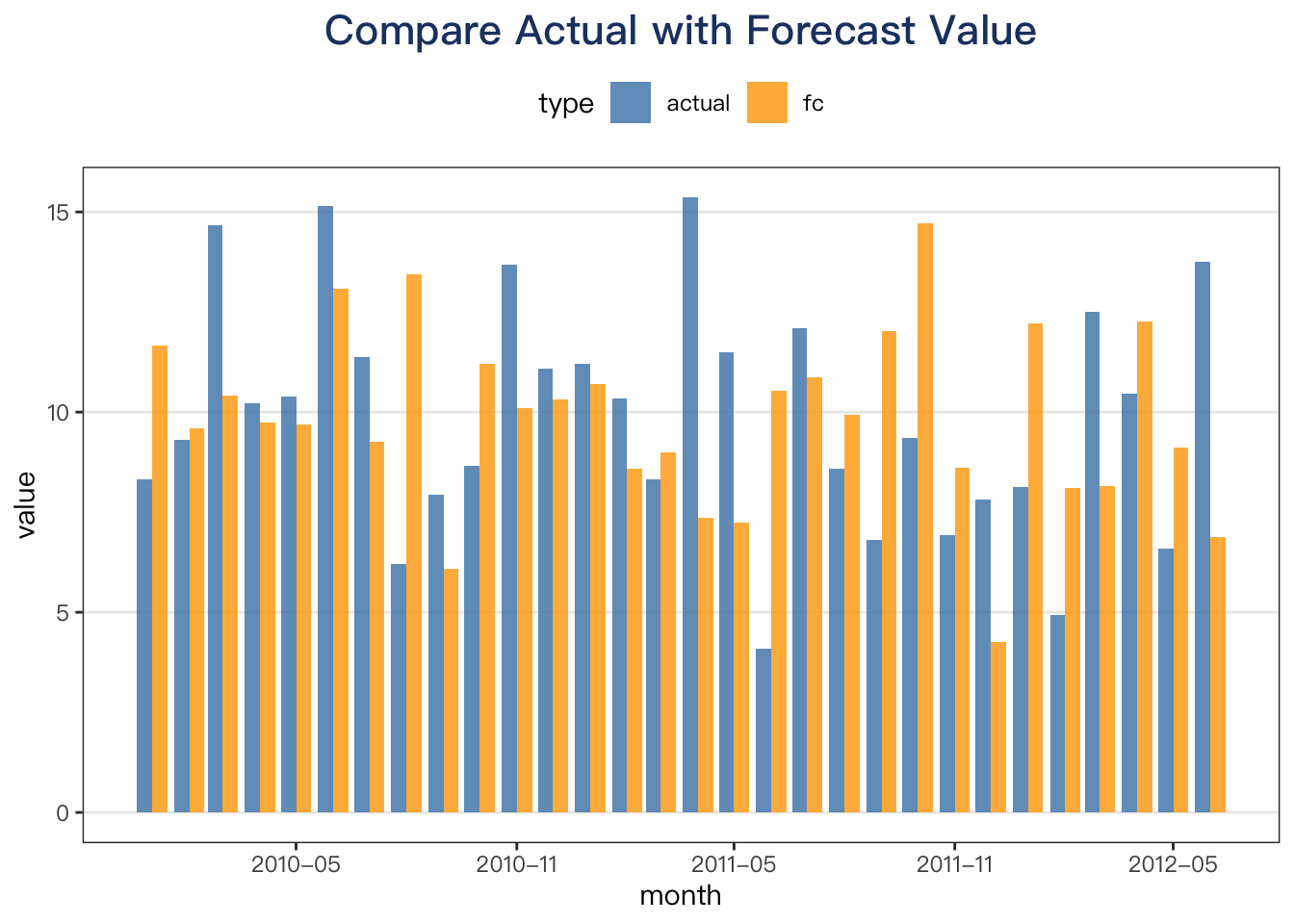R Plotly Tutorial
Loading Package
library(tidyverse)
library(plotly)
library(zetaEDA)
enable_zeta_ggplot_theme()
ggplotly
If you are very familiar with ggplot, then you can easily convert the ggplot object to plotly object, which is able to interactively communicate the plots with the end-user.
set.seed(123)
dat <- tibble(
date = seq.Date(from = as.Date("2010-01-01"), length.out = 48, by = "month"),
actual = rnorm(48, mean = 10, sd = 3),
fc = rnorm(48, mean = 9.8, sd = 2.4)
)
dat <- dat %>%
mutate(
diff = actual - fc,
RMSE = sqrt(mean((diff)^2)),
MAE = mean(abs(diff))
)
Take a look at our data:
dat %>%
head() %>%
knitr::kable()
| date | actual | fc | diff | RMSE | MAE |
|---|---|---|---|---|---|
| 2010-01-01 | 8.318573 | 11.671916 | -3.3533432 | 3.462068 | 2.836012 |
| 2010-02-01 | 9.309468 | 9.599914 | -0.2904467 | 3.462068 | 2.836012 |
| 2010-03-01 | 14.676125 | 10.407964 | 4.2681605 | 3.462068 | 2.836012 |
| 2010-04-01 | 10.211525 | 9.731488 | 0.4800374 | 3.462068 | 2.836012 |
| 2010-05-01 | 10.387863 | 9.697111 | 0.6907523 | 3.462068 | 2.836012 |
| 2010-06-01 | 15.145195 | 13.084646 | 2.0605495 | 3.462068 | 2.836012 |
ggplot code
plt_dat <- dat %>%
select(actual, fc, date) %>%
pivot_longer(cols = -date, names_to = "type", values_to = "value") %>%
mutate(type = factor(type, levels = c("actual", "fc"))) %>%
filter(date <= as.Date("2012-06-01"))
p <- plt_dat %>%
ggplot(aes(x = date, y = value, fill = type)) +
geom_col(position = "dodge", alpha = .8) +
scale_fill_manual(values = c("steelblue", "orange")) +
scale_x_date(
date_breaks = "6 month",
date_labels = "%Y-%m"
) +
labs(x = "month", y = "value", title = "Compare Actual with Forecast Value")
p

Convert to plotly object using ggplotly
When you have a ggplot object, you can apply ggplotly function directly to get the result.
Note that:
-
This approach is the easiest way to do conversion!
-
However, this approach lacks some customization for plotly object.
# ?ggplotly
ggplotly(p)
Plotly
For advanced usage, please use plotly pacakge function directly!
Reference: plotly r offical website
Quickly learn use cheat sheet for plotly.
# step 1: make a plotly object
p2 <- plot_ly()
# step 2: add trace
p2 <- p2 %>%
plotly::add_trace(
data = plt_dat,
x = ~date,
y = ~value,
color = ~type,
type = "bar",
colors = c("steelblue", "orange"),
text = ~date,
hovertemplate = "%{text}<br>%{y:.2f}"
)
# step 3: set layout, i.e. x-axis, y-axis, title, etc.
p2 <- p2 %>%
plotly::layout(
title = "Compare Actual with Forecast Value",
xaxis = list(
tickformat = "%m\n%Y\n",
title = "month",
showline = TRUE,
mirror = TRUE
),
yaxis = list(
showline = TRUE,
mirror = TRUE,
title = "value"
)
)
print your plotly object :)
p2